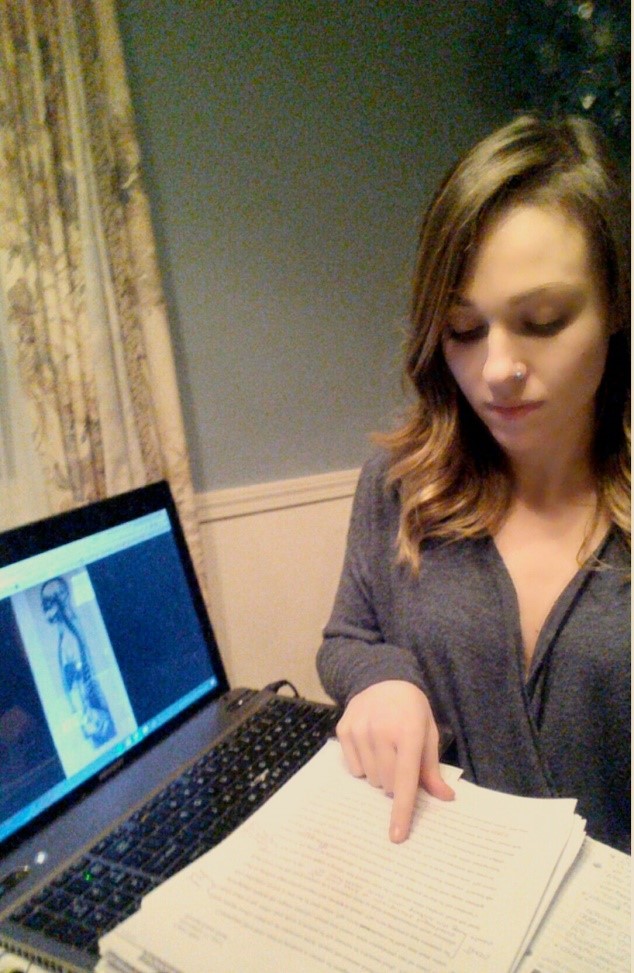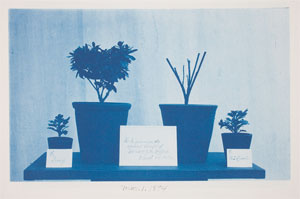Artist unknown, Body Slices, c.1940
While researching the body slices, there have been many mysteries, including how they were made. The coloring of the dark bones contradicts what would have been made by the traditional cyanotype process. I have come up with a number of theories, including a positive print or multiple x-rays, but cannot confirm any of them. While this has been a frustrating point in my research, I look forward to visiting the Yale University Art Gallery to look at similar works; I plan to ask how they think their objects were made. The questions about production have not hindered my understanding of the works, but instead have encouraged me to delve into their meaning. In their transition from medical objects in the 1940s to pieces of art today, the longstanding subject of death has become more prominent. As glimpses into the past, they show the human form as something that is feeble and not eternal. Their life-size scale and bold blue shades enhance their relation to death and connectivity to the viewer. The dead bodies become stand-ins for what the viewer will one day become, because, of course, death is something everyone must face.



 Sign up for WAM eNews
Sign up for WAM eNews